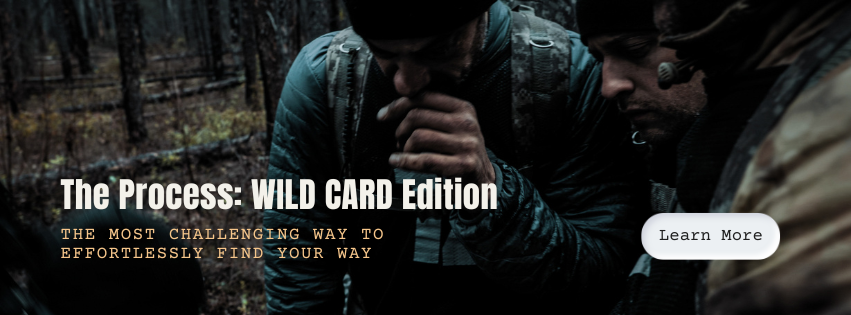
While life doesn’t come with instructions on how to do it “best”, we do have built in mechanisms for finding our way – a kind of self-navigation that helps us maneuver through the chances, choices, and strange detours that lead us to who we are.
I’m sure my life was radically shaped by seemingly trivial choices from my youth like going out that one random night or constantly refusing the sage advice of my mom. All of those random moments somehow helped me get to where I am now. Today it all makes sense, but that’s hindsight.
You and I will never really know the specific crises we avoided by choosing one path over another, nor the full extent of the blessings we’ve received along the way.
But one thing I’ve come to learn as I’ve strutted stumbled through life, is that when I feel lost and off track, if I can question where I am in my own story and use that internal self-navigation system, I usually realize that getting back to my path isn’t really as far off as it felt.
If you’ve ever been lost in the wilderness, you know how quickly it can happen along with how frightening and dangerous it can be. You could be many miles or just a few meters away from where you need to be. It’s difficult to know.
Feeling lost in life isn’t much different.
There are times where you will believe you made a wrong turn in life from which there is no return. That isn’t an uncommon feeling. I go there sometimes too. But when I question my maps and model of my experience and continually test them against a more raw input of reality, I can see aspects of what’s also real and true that was previously hidden. That helps me get back on track.
One of the problems with finding our way is we tend to have a negativity bias. Most of the time it feels like miles, when it’s just meters. We look in the mirror and we only see what could be better. We look at our bank accounts and we wish we were Tom Cruise. Kidding. I don’t want to be Tom Cruise, I swear.
Our attention starts to slowly focus on the negatives in our lives, then we feel bad about that, and then we create beliefs about the data we’re picking up on. And then our reticular activating system starts to look for additional data that supports our new beliefs and we’re stuck in a cycle of shame and blame.

But this isn’t the whole story of what’s going on in your life. Not even close. You’re just not picking up on what else is happening to get you going on your path again.
Let’s continue with the analogy of a map.
Imagine a UV/blacklight map that reveals new layers of detail depending on the light that illuminates it. Our mental maps literally change before our eyes when our assumptions are questioned, we adopt new ways of seeing, and our perception of reality changes. When we challenge our established beliefs and expose them to new ideas, hidden truths come to light.
Thermochromic maps change with temperature, showing different details with heat or cold. Our understanding of the world also shifts with our emotional states and experiences, transforming our perceptions and revealing new insights.
Just as these “reveal maps” expose hidden details through various lenses, our understanding of who we are and where we are in our life is an ever-evolving process.
But how do we question our mental maps when it seems we can only see what’s on the surface?
You need to open up the scope of your attention and recalibrate your senses so they’re tuned to what is important to you – this is your own version of being on track.

I created this process which I use when stuck in a cycle that I’d like to share with you. Consider it a “break in-case-of-emergency” kind of protocol when you’re feeling either miles or meters away from where you want to be.
SFE Attention Protocol
- First, I get clear on my top 3 values because if I’m living life aligned with these, then I feel like I’m in a good place.
- Then I do a week of what we could call an ATTENTION PROTOCOL.
- RAS Protocol: I start the morning when I first wake up, in the space between being asleep and awake with my eyes still closed saying to myself that I am my values. “I am (value 1). I am (value 2). I am (value 3).”
- Then I fill out the AM portion of this worksheet to tune my attention for the day on what matters most to me.
- Right before bed, I finish the rest of the worksheet and freely journal anything else that’s come up.
- RAS Protocol: I drift off to sleep repeating again to myself, “I am (value 1). I am (value 2). I am (value 3).”
I find this actually works remarkably fast.
My experience of life begins to show me that I am in fact on the right track sometimes in subtle ways, sometimes big huge ways I couldn’t believe I missed. It allows me to see where I can improve while being kind to myself about it. It also begins to focus my attention on clues and signs that point towards progress and forward movement that’s meaningful and purposeful.
This Attention Protocol is a gentle way to realign and see things differently without making any big intense moves. I’m all for big intense moves, but those aren’t sustainable as a regular practice.
Ideally, I’d do this everyday. But honestly, I’m not so into strict regimens lately.
I hope this process helps you find your way also.
Shoot me an email if you’re enjoying these articles. I’d like to know what’s resonating with you. I’m also open to feedback and suggestions if you have any. I respond to all emails (eventually). You can reach me at jeff@thespecialforcesexperience.com
Cheers,
Jeff Depatie

